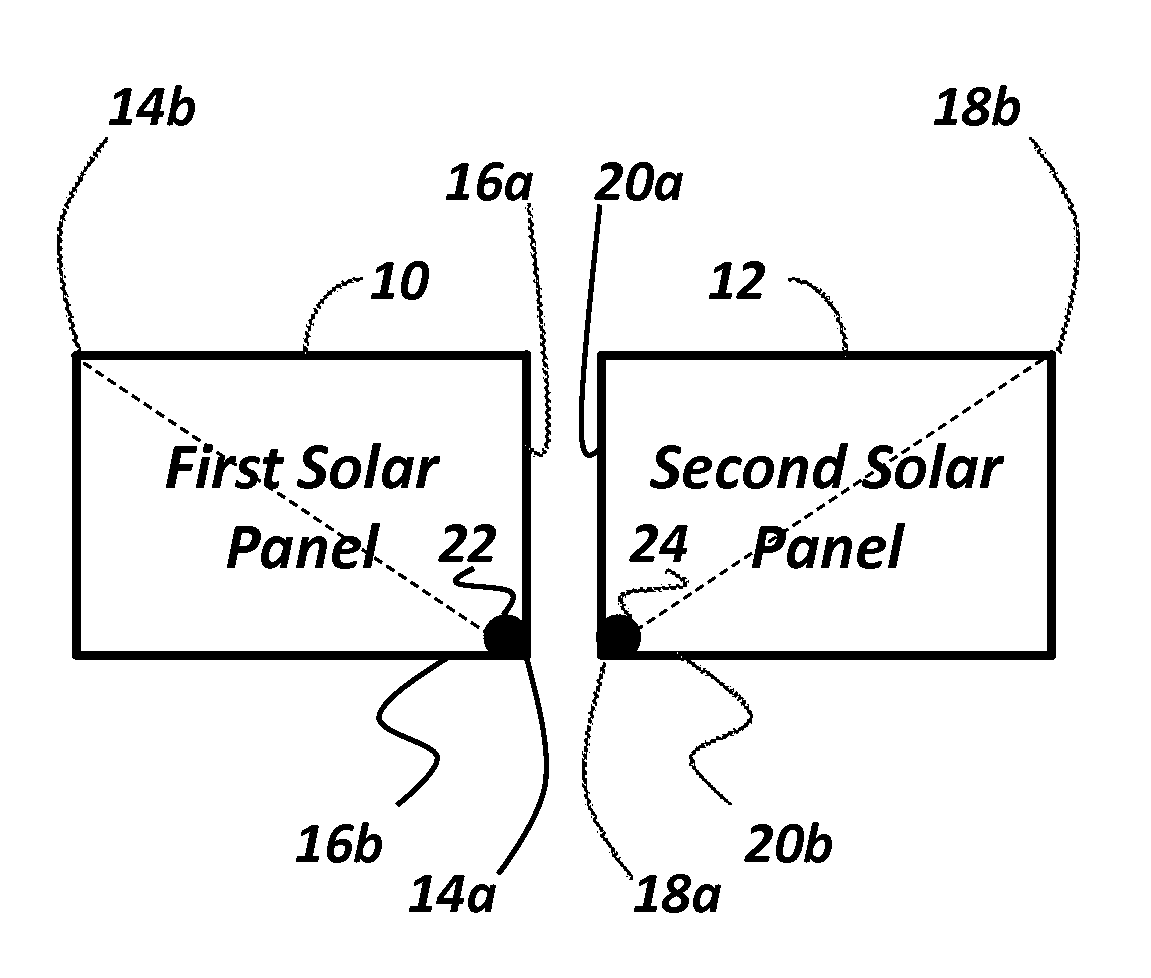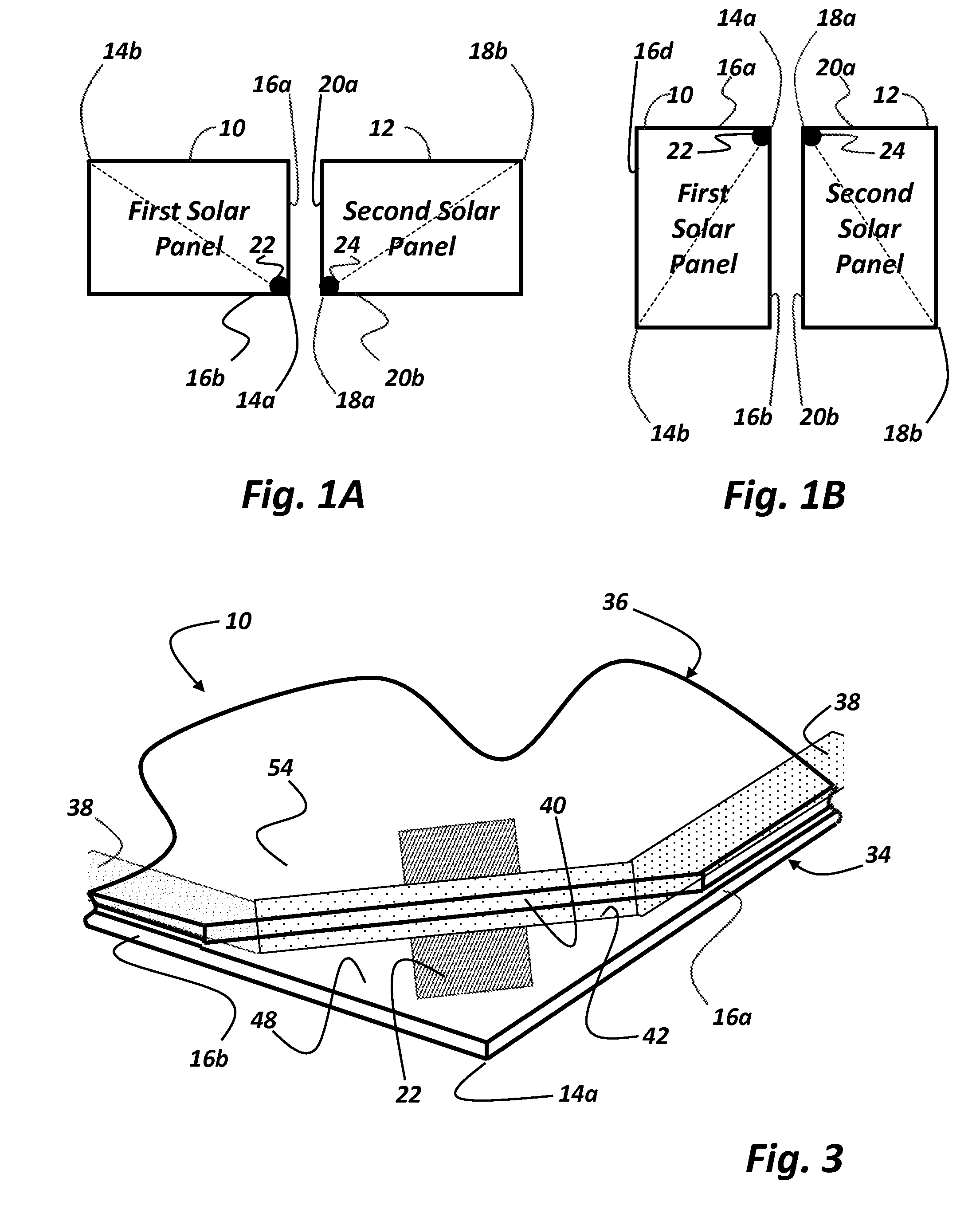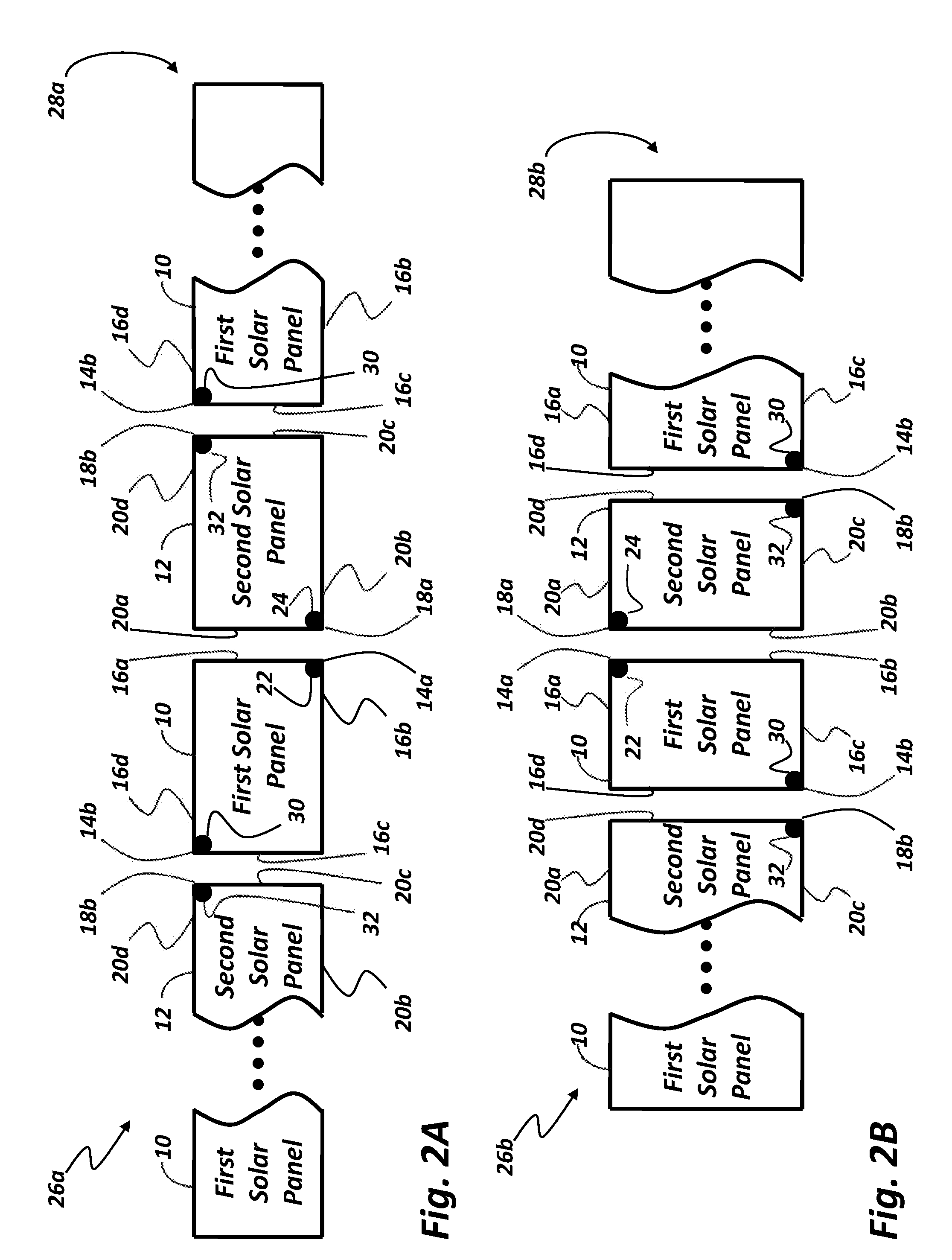Solar Panel Interconnection System
a technology of interconnection system and solar panel, which is applied in the direction of photovoltaics, electrical devices, and semiconductor devices, can solve the problems of increasing the cost of the cable itself, the total increase of the power, and the loss of power through resistance, so as to achieve the effect of minimizing the total resistive loss, minimizing the length of the cable between the panel and the array, and avoiding the loss of power
- Summary
- Abstract
- Description
- Claims
- Application Information
AI Technical Summary
Benefits of technology
Problems solved by technology
Method used
Image
Examples
Embodiment Construction
[0031]Referring now to FIGS. 1A-1B, there is shown a first solar panel 10 and a second solar panel 12. The first solar panel 10 has first diagonally opposed corners, 14a, 14b and a first edge 16a and a second edge 16b extending from one of the first diagonally opposed corners 14a, 14b, exemplarily shown herein as corner 14a. Similarly, the second solar panel 12 has second diagonally opposed corners, 18a, 18b and a first edge 20a and a second edge 20b extending from one of the second diagonally opposed corners 18a, 18b, exemplarily shown herein as corner 18a.
[0032]The first solar panel 10 further has a tap 22 disposed thereon at one of the first diagonally opposed corners 14a, 14b from which each of the first edge 16a and the second edge 16b of the first solar panel 10 extends, exemplarily shown herein as corner 14a. Similarly, the second solar panel 12 has a tap 24 disposed thereon at one of the second diagonally opposed corners 18a, 18b, from which each of the first edge 20a and t...
PUM
 Login to View More
Login to View More Abstract
Description
Claims
Application Information
 Login to View More
Login to View More - R&D
- Intellectual Property
- Life Sciences
- Materials
- Tech Scout
- Unparalleled Data Quality
- Higher Quality Content
- 60% Fewer Hallucinations
Browse by: Latest US Patents, China's latest patents, Technical Efficacy Thesaurus, Application Domain, Technology Topic, Popular Technical Reports.
© 2025 PatSnap. All rights reserved.Legal|Privacy policy|Modern Slavery Act Transparency Statement|Sitemap|About US| Contact US: help@patsnap.com



